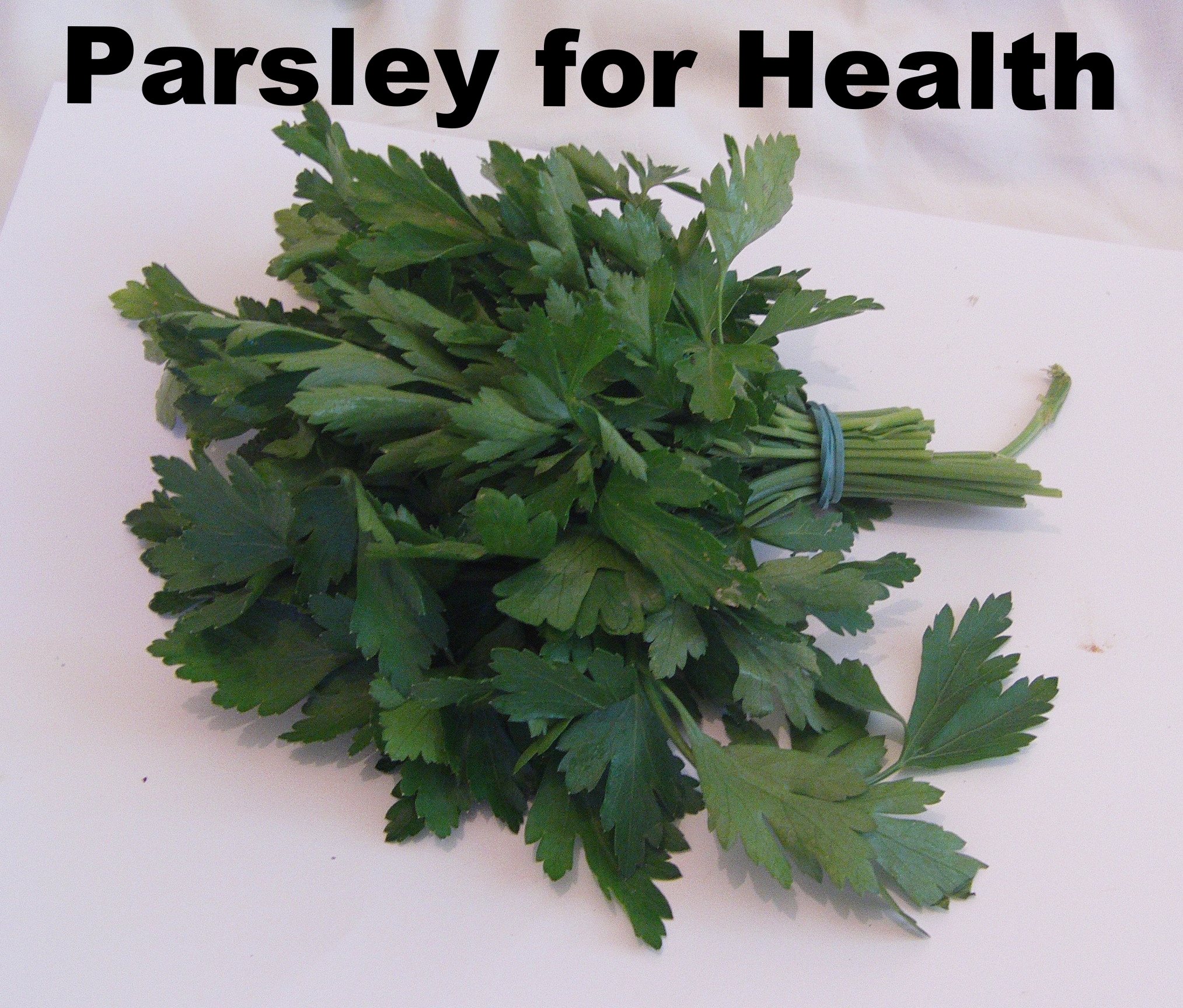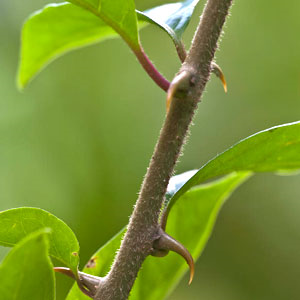
Parsley (Petroselinum crispum) - More than Just a Garnish
Often thought of only as garnish for a pretty plate, parsley is a delicious, vibrant green herb with many...
By Art Presser, PharmD - President, Huntington College of Health Sciences
 Background:
Background:Cat’s Claw is a woody vine that winds itself around trees, upwards of 100 feet, in the Peruvian rainforests. Hook-like thorns adorn the leaves, resembling the claws of cats, hence the name. For hundreds of years, local Indians, medicine people, and shamans have stewed the inner bark and roots of Cat’s Claw to prepare medicines to treat a variety of illnesses.
There are actually over 30 species of Uncaria, however the two species of medicinal interest are U. guianensis and U. tomentosa. Although both species produce similar benefits, U. tomentosa has been more thoroughly researched, has a greater range of uses, and is hence preferred in the American market.
In researching the benefits of Cat’s Claw, the only thing I couldn’t find its consumption good for is the loose spokes on my bicycle rims, and I can’t say for sure it’s not good for that too. Here is a partial list of ailments that Cat's Claw is purported to benefit: arthritis, cancer, fibromyalgia, lupus, respiratory infections, allergies, shingles, prostate problems, asthma, rheumatism, viral infections, diverticulitis, colitis, leaky gut syndrome, menstrual problems, a contraceptive, acne, depression, gonorrhea, diabetes, hypoglycemia, parasites, candida, intestinal flora imbalances, gastritis, ulcers, Crohn's disease, hemorrhoids, herpes, AIDS, cirrhosis, chronic fatigue syndrome, multiple sclerosis, and the ill effects of radiation and chemotherapy.
Whether or not these purported benefits will all stand up to scientific scrutiny is yet to be seen. We can only hope that appropriate research will continue. In the meantime, some clinical evidence does exist. In fact, scientific studies by the National Cancer Institute have verified both anticancer and immune stimulating properties of Cat's Claw.
Cat’s Claw, like most plants, is extremely complex in its composition and is very rich in phytochemical actives. Research has uncovered a host of chemical components that may very well explain its folkloric uses.
The active constituents that appear to be the most important are a group of alkaloids called oxindole alkaloids. These oxindoles include isopteropodine, pteropodine, isomitraphylline, rhynchophylline, isorynchophylline, and mytraphylline. Four of these components have been found to have profound immunostimulating properties. Isopteropodine is the most active of these. In fact, researchers use it, in addition to total oxindole alkaloids, as the standard determining the quality of Uña de Gato.
A recent study has suggested that there are two chemotypes of the plant. Each chemotype has a different oxindole alkaloid pattern. One type has a greater tetracyclic oxindole level, the other a greater pentacyclic oxindole level. This ratio may be significant. The study claims that it is the penacyclic fraction that has the immunomodulating effect on cells, and the tetracyclic fraction antagonizes this action of the pentacyclics. Questions still remain to be answered, and I am looking for more studies to be published. This one looks like it was sponsored by an Austrian company that is the patent holder on the process of extracting this new Cat’s Claw chemotype. They also have a product on the market.
The oxindole, Rhynchophylline, may have significant cardiovascular properties. It has been shown to inhibit platelet aggregation and thrombosis. It has been suggested that this phytochemical may be useful in reducing the risk of heart attack by lowering blood pressure, increasing circulation and by preventing the formation of blood clots.
Oxindole alkaloids are not the only components of Cat’s Claw that are of medicinal value. The plant also contains quinovic glycosides, triterpines, polyphenols, proanthocyanidines, and phytosterols. The quinovic acid glycosides in Uña de Gato have been shown to display anti-viral actions. Triterpines show anti-viral, anti-ulcer, antioxidant , anti- inflammatory, anti-allergic, and increased killer cell activity. Polyphenols and proanthocyanidines, like those found in grapeseed, green tea, and other various fruits and vegetables are powerful antioxidants. And, phytosterols help control cholesterol and can act as hormone precursors that can possess anti-tumor and anti-inflammatory properties.
Now, take all this science and apply it back to South America’s history of folkloric uses.

With the wealth of possible benefits Cat’s Claw might offer, where does it fit in modern uses? Well, two primary areas that cannot be ignored are immune stimulation and anti-inflammatory action. Studies within the last decade have confirmed these activities.
It is generally recognized that Cat’s Claw can enhance the process of phagocytosis, that is, the process by which our immune system engulfs and destroys invaders and mutations. Reports have demonstrated that it can improve immunity in cancer patients, and act as an anti-mutagenic, and anti-viral agent. Additionally, given the aforementioned, in light of the fact that Cat's Claw has been used to reduce the side effects of radiation and chemotherapy in conventional cancer treatments, there seems to be a foundation upon which to marry the treatments.
And, while strong clinical evidence of Una de Gato’s usefulness in treating systemic inflammatory and inflammatory gastrointestinal diseases seems to be lacking, its reported value for the treatment of arthritis, rheumatism, diverticulitis, gastritis, Crohn’s disease, dysentery, and ulcers cannot be ignored.
Other interesting uses are under current study. Cat's Claw is being used in some studies in combination with AZT to both slow the progression of AIDS, and to reduce the drug’s side effects. Additionally, Peruvian research has demonstrated positive effects in treating children with leukemia. Studies on cats with leukemia are also underway.
In terms of dosage, since this is an herbal medicine that has generally been used in a crude form, namely a decoction, a brew of bark and leaves, perhaps it makes more sense to use a full spectrum extract rather than a substance concentrated to any one component.
Look for an extract somewhere in the neighborhood of 4:1. Meaning that for each 100 grams of crude plant, 25 grams of solids have been extracted. Having found such an extract, take 500mg to 1000mg three times daily.

Parsley (Petroselinum crispum) - More than Just a Garnish
Often thought of only as garnish for a pretty plate, parsley is a delicious, vibrant green herb with many...

The Science of Bathing
Water is commonly employed to affect the human body using hot baths to relax muscles or ice packs to reduce swelling. In holistic medicine, water...